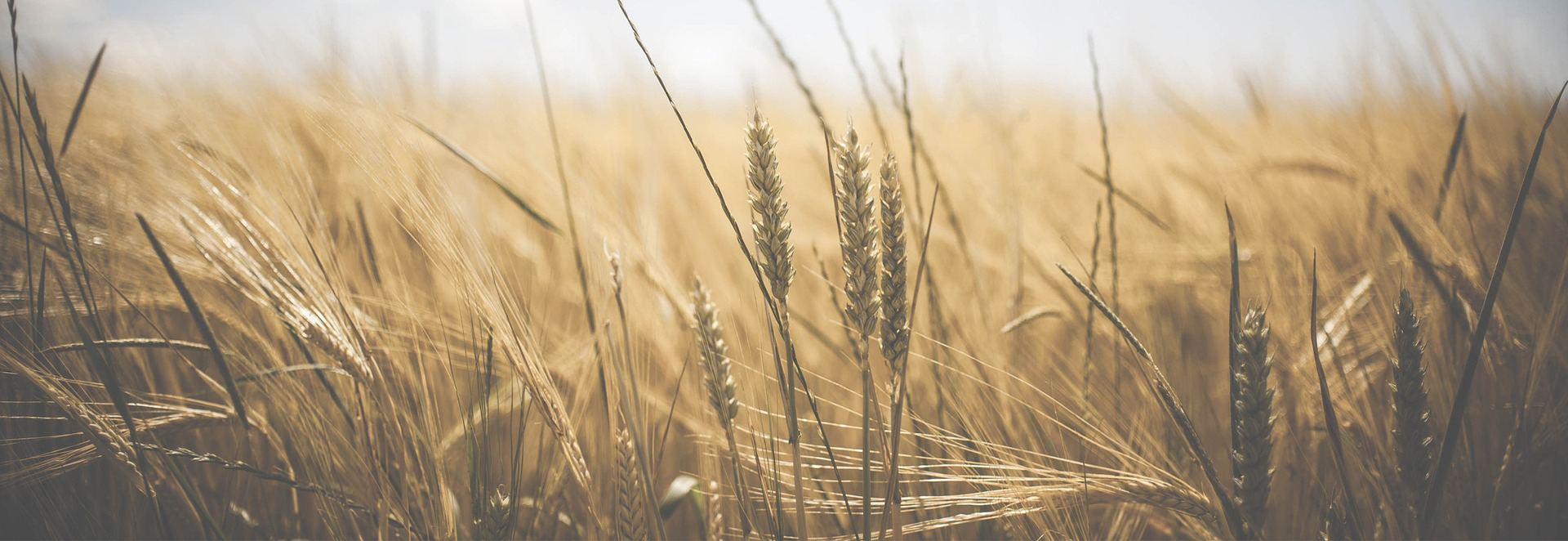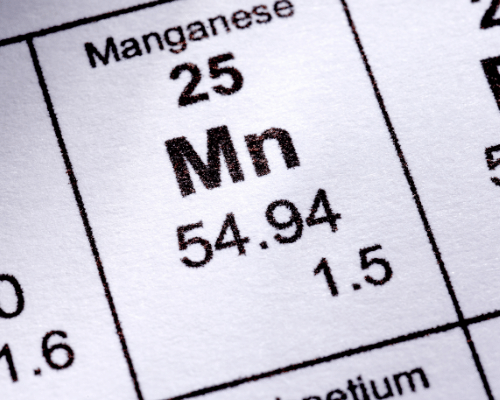
By Dr. James C. Coomer, Ph.D., P.A.S.

Manganese (Mn) is an important trace mineral which animals require in very small quantities). It is involved in many aspects of both plant and animal life, primarily as an enzyme activator.
Reduced growth or abnormal growth and development (such as perosis in chickens) is one of the most common deficiency symptoms.
Manganese plays a part in activating the enzymes responsible for the production of mucopolysaccharides and glycoproteins. These form the organic matrix of bone and cartilage. Therefore a deficiency of Mn may result in shortened or malformed bones, especially in fetuses from cows that have been eating a diet deficient in Mn.
Manganese is also a part of Mn-superoxide dismutase, which plays a part in limiting the build-up of highly reactive oxide molecules in cells. There is also a metabolic association between Mn and choline which affects fat metabolism in the liver. Manganese is involved in the biosynthesis of choline and thus a deficiency of Mn may result in a deficiency of choline. A choline deficiency limits the liver’s ability to metabolize fats and use them for energy and may result in the build-up of fat in the liver (fatty liver).
This situation would be especially important in the early post-partum dairy cow since she is in negative energy balance and is relying on the liver to metabolize body fat to meet her energy needs for milk production. Reproduction in cattle has also been shown to be affected by Mn deficiency, with sterility and reduced conception rates reported in both the US and in Great Britain. The exact reason for this effect has not been determined as yet, but improvements in reproduction were produced when diets low in Mn were supplemented with additional Mn.
Manganese is a di- (+2) or tri- (+3) valent metal cation similar to iron.
The skeleton contains about 25% of the total body Mn. Excess Mn results in excess concentrations in hair, wool, and feathers. Manganese absorption is generally poor, with most studies reporting 1% absorption or less of the ingested Mn.
Manganese competes directly with cobalt (Co) and iron (Fe) for binding sites in the digestive tract. Therefore, an excess of Co or Fe may result in lower absorption of Mn and a potential deficiency of Mn.
Calcium (Ca) and phosphorus (P) also influence the absorption of Mn. High levels of dietary Ca and/or P also reduce Mn absorption most likely due to lowered solubility of Mn.
Manganese is more soluble at a lower pH. With this in mind, plants/crops grown on lower pH soils will have higher levels of Mn. Most Mn deficiencies in ruminant animals are in areas where soil pH is higher and forages are lower in Mn content.
As the name trace-mineral implies, the requirement for Mn is very low, generally expressed as parts per million (ppm) or milligrams/kilogram (mg/kg). Requirements for Mn in chicken diets is the highest of any species. The suggested levels of 40-60 ppm in the diet help prevent perosis (slipped tendon). Beef cattle suggested levels in the diet are around 20-40 ppm and dairy cattle at about 40 ppm on a dry matter basis.
These requirements may need to be raised if any of the confounding factors (high Ca, P, Co or Fe) that affect Mn absorption are involved in the diet. Manganese supplementation is more critical in areas where soil pH is higher and therefore crops would have lower Mn levels.
Manganese sulfate historically is the most common source of Mn supplement in animal nutrition. However, in the last 20 years, “organic” forms of Mn are increasingly used to supplement the diets of livestock.
The term “organic”, when referring to trace minerals, has nothing to do with “Certified Organic” livestock farming. “Organic” trace minerals refer to trace minerals that have been complexed or chelated to an organic molecule such as an amino acid or sugar molecule. This reduces the likelihood of the Mn interacting with the other confounding factors mentioned earlier. In some cases, it is believed absorption from the digestive tract is increased through the use of a different absorption site associated with the organic molecule.
The organic forms of Mn are more expensive to use. However many in the livestock industry, including Agri-King, believe it is worth the expense to supply some of the dietary Mn in the organic form.
There has been some talk recently about Mn and glyphosate-resistant crops. This is based on research out of Indiana that showed glyphosate will complex with Mn.
Glyphosate will complex with Mn as well as Ca and Mg. This appears to be a bigger problem for weed control than for crop or livestock issues. The glyphosate that complexes with one of these minerals, becomes inactive and therefore unable to control weeds in the crop. As for creating an Mn deficiency in the plant, it appears this may only be a problem in areas with very low soil Mn levels and high soil pH.
Manganese toxicity is very unlikely to occur in most species. This is mainly a result of the very low absorption of Mn from the intestine. Any toxicity would likely result from high levels of Mn interfering with the absorption of another mineral (Cu, Fe). This could cause a deficiency of that mineral. AK